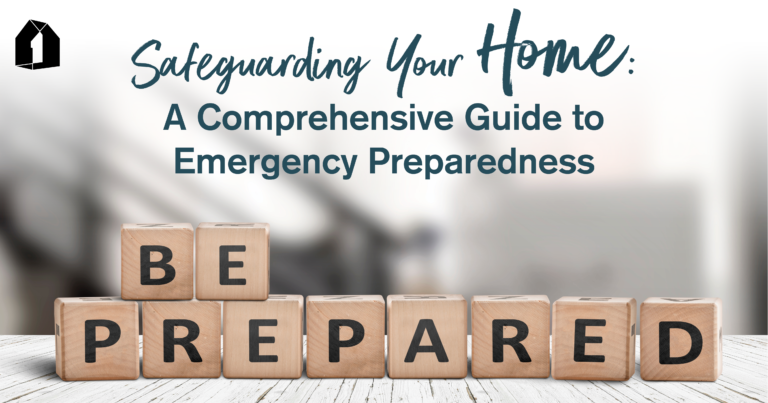
As we navigate through hurricane season and witness recent incidents like the Maui fires, the importance of emergency preparedness cannot be understated. Your home is more than just a physical structure – it’s your sanctuary. In this blog, we’ll delve into practical steps to safeguard your home and loved ones during emergencies.
Risk Assessment: Start by identifying the potential risks in your area. Research the types of emergencies that are most likely to occur, such as hurricanes, floods, wildfires, or earthquakes. Understanding these risks will help you tailor your preparations accordingly.
Develop a Family Emergency Plan: Gather your family to create a clear and comprehensive emergency plan. Outline evacuation routes, designate meeting points, and discuss communication protocols. Ensure everyone understands their roles and responsibilities during an emergency.
Assemble a Customized Emergency Kit: A well-thought-out emergency kit is essential. Customize it based on your family’s needs and potential risks. Include non-perishable food, water, a first aid kit, medications, personal hygiene items, a flashlight, batteries, a multi-tool, and any special items for infants, elderly family members, or pets.
Strengthen Your Home’s Defenses: Fortify your home against potential threats. Reinforce windows and doors, secure loose objects in the yard, and consider installing storm shutters or fire-resistant roofing materials. Regularly inspect and maintain your home’s structural integrity.
Safeguard Important Documents Digitally: While physical copies are important, digitize crucial documents and store them securely in cloud storage. This ensures that even if your physical copies are lost, you can access vital information from anywhere with an internet connection. This includes having copies of logins and passwords if you do not have them memorized.
Review and Update Insurance Coverage: Regularly review your homeowner’s insurance policy to confirm it covers various types of disasters. Depending on your location, consider additional coverage for flood, earthquake, or wildfire damage. Keep a copy of your policy in your emergency kit.
Stay Informed: Stay connected to local news and weather updates. Utilize smartphone apps, weather radios, and community alert systems to receive timely information about impending emergencies.
Practice Regular Drills: Hold emergency drills with your family to ensure everyone knows what to do in different scenarios. Practicing evacuations, using emergency equipment, and communication procedures can make a significant difference during a real emergency.
Create a Communication Tree: Establish a network of neighbors, friends, and family members who can support each other during emergencies. Share contact information and check in on each other’s well-being when disaster strikes.
Foster Resilience and Adaptability: Prepare mentally for emergencies by discussing potential scenarios with your family. Foster a sense of resilience and adaptability, knowing that being prepared can make a challenging situation more manageable.
Emergency preparedness is a responsibility that empowers you to protect your home and loved ones during unforeseen events. By customizing your approach, developing a clear plan, and investing time in proactive measures, you can significantly reduce risks and navigate emergencies with confidence. Remember, a little preparation today can go a long way in securing your tomorrow.
- SEO Powered Content & PR Distribution. Get Amplified Today.
- PlatoData.Network Vertical Generative Ai. Empower Yourself. Access Here.
- PlatoAiStream. Web3 Intelligence. Knowledge Amplified. Access Here.
- PlatoESG. Automotive / EVs, Carbon, CleanTech, Energy, Environment, Solar, Waste Management. Access Here.
- PlatoHealth. Biotech and Clinical Trials Intelligence. Access Here.
- ChartPrime. Elevate your Trading Game with ChartPrime. Access Here.
- BlockOffsets. Modernizing Environmental Offset Ownership. Access Here.
- Source: https://firsthome.com/safeguarding-your-home-a-comprehensive-guide-to-emergency-preparedness/



